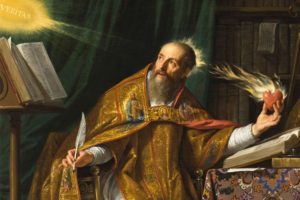Studying the Roman Catholic interest of the calendar is a fascinating exercise. In expressing the way in which time is sequenced, it gives access to what Roman Catholicism considers important for the Christian life and for humanity in general. The Roman Church has always paid great attention to establishing the rhythms of life by shaping and filling them with religious contents and symbolism. It is not by chance that our Gregorian calendar (i.e. our Western calendar) takes its name for Pope Gregory XIII who in 1582 stabilized the previous Julian calendar and gave shape to our modern one. It is worth considering that our way of measuring time was basically decided by a Roman Emperor and then by a Roman Pope.
In the Middle Ages the Roman Church punctuated the established Christian calendar centered around traditional festivals (e.g. Easter, Pentecost, Christmas) by adding the veneration of a saint for each day of the year. Popular devotion was therefore given a daily opportunity to exalt the virtues of exemplary men and women and to pray to them. The practice of the intercessory prayers to the saints was also encouraged and still remains a defining practice for many Catholics around the world. Time is marked by devotional practices that convey a powerful religious worldview.
Besides holy years, yearly festivals, special weeks, single days, and the liturgy of the hours, the Roman Catholic calendar also focuses on particular months. Different cycles of life are saturated with different liturgical and devotional exercises. One month in particular deserves some comments.
Why May?
In the Roman Catholic liturgical calendar May is traditionally the Marian month. In Marian encyclopedias and in Mariological dictionaries the only explanation that is given for the choice of this particular month is that May is the time of year when Spring shines forth with warm weather and the fields begin to show the coming and growing harvest. As nature in May, so to speak, awakens after Winter, so the Christian life reflects the reinvigoration of life. The Virgin Mary is associated with the renewal of things and the beginning of a new fruitful season.
At the end of XIX century, Mothers’ Days began to be celebrated in the West. Apparently, there was no previous connection with the Marian month which was already a well established practice in the majority of Catholic nations. Mother’s Day started with the desire to honor the memory of one’s own mother. Of course, many Catholics saw the emergence of Mother’s Day in May as a “providential” coincidence to honor the Mother par excellence, the Virgin Mary. The two meanings, religious and secular, are now blended, thus resulting in an ever more “catholic” month.
What Happens in the Marian Month?
The Marian month is celebrated in a variety of ways. The highly sophisticated Mariology coincides with popular practices that are deeply rooted in folk Catholicism. From the bottom up, grassroots Marian movements organize vigils of prayer to Mary at the parish level, with open air processions, rosaries, and chains of prayer. The idea is to mark the territory with Mary’s presence. In Marian sanctuaries activities become frenzy due to the pilgrimage of groups. In homilies references to the various Mariological dimensions are even more emphasized. In Catholic bookshops, special rosary chains and devotional tools are given special interest.
In May, even papal speeches and addresses take a more Marian slant. Between Easter Sunday and Pentecost, the Pope recites them prayer Regina Coeli (i.e. “Queen of heaven”) instead of the Angelus at midday in St. Peter’s square. Pilgrims and tourists gather to listen to and pray with the Pope. Regina Coeli is an old Marian prayer whose text contains Roman Catholic Mariology in a nutshell:
Queen of Heaven, rejoice, alleluia.
For He whom you did merit to bear, alleluia.
Has risen, as He said, alleluia.
Pray for us to God, alleluia.
Rejoice and be glad, O Virgin Mary, alleluia.
For the Lord has truly risen, alleluia. Let us pray.
O God, who has been pleased to gladden the world
by the Resurrection of your Son our Lord Jesus Christ,
grant, we pray, that through his Mother, the Virgin Mary,
we may receive the joys of everlasting life.
Through the same Christ our Lord. Amen.
In Regina Coeli Mary is the recipient of prayers and the intercessor between the faithful and Christ. This is Marian month.
Leonardo De Chirico
leonardo.dechirico@ifeditalia.org
Rome, 15th May 2012

![512988[1] 512988[1]](http://chriscastaldo.com/wp-content/uploads/2012/05/5129881_thumb.jpg)



